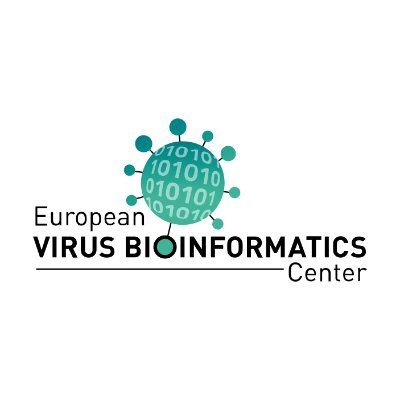
Philippe Lemey's lab
@LemeyLab
Followers
1K
Following
255
Media
6
Statuses
163
Tweets sometimes by Philippe Lemey, but usually by other (mysterious) lab members! Thus, opinions, likes and retweets may not express PL's own view 🤫
Leuven, Belgium
Joined January 2017
How fast do #viruses spread in the wild? @sdellicour @LemeyLab &co compare dispersal metrics from #phylogeographic analysis of viral #epidemic genomes with dispersal capacity of diverse viruses, revealing host movement-related discrepancies #PLOSBiology
https://t.co/pH3MnR7NKo
2
19
75
It was an honor to host the #ViBioM2024 meeting in #Leuven @ the #RegaInsitute the last 3 days! Great science @ the interface of #Virology & #Bioinformatics! Fantastic to welcome old friends and make new ones! Hope to see you all again in Lisbon @ #ViBioM2025 🦠 🖥️
4
7
44
Please RT, the Spatial Epidemiology Lab ( https://t.co/9SrgXZJfJe,
@ULBRecherche) is hiring: I am looking for a post-doc to work on spatial models helping to target under-immunised communities during vaccination activities in the DRC:
1
36
35
How fast are viruses spreading in the wild? Check out our latest study now available as a preprint on bioRxiv: https://t.co/JkUpOaUhLb. A study performed with Paul Bastide, Pauline Rocu, Denis Fargette, Olivier Hardy, @suchard_group, Stéphane Guindon, and @LemeyLab (1/7)
2
16
46
In this study we have analyzed almost 300k SARS-CoV-2 genomes, most of them generated by COVIGEN network which played a central role in strengthening genomic surveillance in Latin America and the Caribbean region. We then inferred the diffusion patterns of Gamma, Lambda and Mu.
Dispersion patterns of #SARSCoV2 variants Gamma, Lambda and Mu in Latin America and the Caribbean @GrafTiago @Juliana_Leite_
https://t.co/udcdMe9R0Q
1
13
47
Leishmania braziliensis populations in rainforests have low-prevalence single viral lineages, while more dispersed hybrid #parasites show increased #viral #prevalence, #diversity, and #spread. [EVBC involved: @LemeyLab]
0
8
25
Here we go again: Mark your calendars for the International #VirusBioinformatics Meeting 2024 and join us in Leuven, May 28-30, 2024! Organized together with @KU_Leuven and @ULBruxelles. Stay tuned for more updates and registration details. #SaveTheDate #ViBioM2024
0
35
79
Proud to announce that our latest collaborative study on the projected decline in European bumblebee populations in the 21st century has just been published in @Nature: https://t.co/jjqcF7rpkp - @frsFNRS @ULBRecherche (1/9)
nature.com
Nature - A quantitative study of past, present and future ecological suitability of Europe for bumblebees finds that for 38–76% of species now considered non-threatened, suitable territory...
5
10
50
Our latest study, in which we used a phylogeographic approach to investigate the endemic signature of rabies virus (RABV) circulation in Cambodia, has just been published in Molecular Ecology:
2
5
12
Excited to see our paper now online https://t.co/tVhieL9SeS! By integrating a dataset of ~116,000 Omicron genomic sequences with epi and human mobility data, we investigate the invasion dynamics of Omicron BA.1 into England and its local dissemination at multiple spatial scales.
science.org
The Omicron variant was introduced into the UK before detection in South Africa and spread rapidly before international travel restrictions.
4
18
57
We got a new preprint up on @biorxivpreprint !! The recency and geographical origins of the bat viruses ancestral to SARS-CoV and SARS-CoV-2 🦇🦠🗺 https://t.co/6HaF2XAISE
biorxiv.org
The emergence of SARS-CoV in 2002 and SARS-CoV-2 in 2019 has led to increased sampling of related sarbecoviruses circulating primarily in horseshoe bats. These viruses undergo frequent recombination...
10
52
121
Our new study on main SARS-CoV-2 variants having spread in New York City (late 2020 - early 2022) has been published in @PLOSPathogens: https://t.co/fZZSjlzNTI (1/5)
journals.plos.org
Author summary The evolution of SARS-CoV-2, the virus responsible for the coronavirus disease 2019 (COVID-19) pandemic, has seen the emergence of novel variants with increased transmissibility,...
4
19
42
Massively parallel #GPU algorithms enable more efficient inference techniques for #phylogenetic models with increasing number of sequences. [preprint co-authored by EVBC members @LemeyLab @suchard_group]
0
5
8
The study that we conducted with Steven Van Borm and Géraldine Boseret from @sciensano on the atypically pathogenic avian influenza H3N1 epidemic that occurred in Belgium in 2019 has just been published in @CDCgov Emerging Infectious Disease journal:
1
7
27
Early Genomic #Surveillance and #Phylogeographic Analysis of Getah Virus, a Reemerging #Arbovirus, in Livestock in China. [co-authored by EVBC members @sdellicour @suchard_group @LemeyLab]
journals.asm.org
Although livestock is known to be the primary reservoir of Getah virus (GETV) in Asian countries, where identification is largely based on serology, the evolutionary history and spatial epidemiology...
0
7
14
Predicting the evolution of the #Lassa virus endemic area and population at risk: introduced into a new suitable region, the #spread might remain spatially limited over the first decades. [co-authored by EVBC members @suchard_group @LemeyLab @sdellicour]
nature.com
Nature Communications - It is currently unknown how climate and land use changes could affect the endemic area of Lassa virus, a zoonotic pathogen responsible for Lassa fever. Here, the authors...
0
7
18
Summary of the #Bayesian #phylogenetic framework and conceptualization of a variety of methods to improve posterior approximations via Markov chain Monte Carlo sampling. #inference [Review co-authored by EVBC members @suchard_group @LemeyLab]
royalsocietypublishing.org
Recent advances in Bayesian phylogenetics offer substantial computational savings to accommodate increased genomic sampling that challenges traditional inference methods. In this review, we begin...
0
17
39
Very pleased to see @LiYiqiao92's work on Pestivirus endogenous viral elements (EVEs) in shrew genomes now out in MBE! https://t.co/iOKz6T6wxN A short thread about the key points:
1
9
35















